
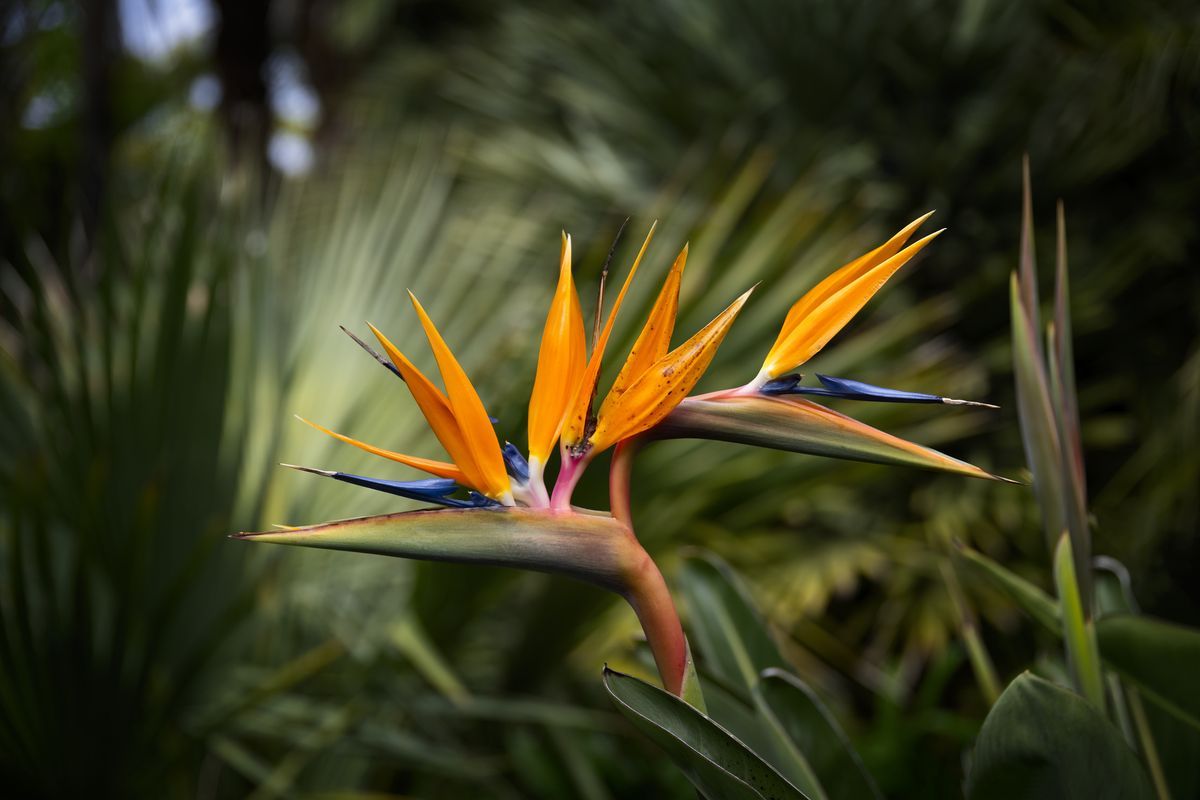
How to Grow Stunning Bird-of-Paradise Plants That Bloom Year After Year
With their striking leaves and petals, bird-of-paradise plants bring a little something exotic to any home or garden. Their origami-esque tropical flowers really do resemble a bird in flight, and they come in a variety of colors from sunset hues to creamy white. They may seem like the kind of high-maintenance prizes best left to experienced gardeners, but bird-of-paradise plants are surprisingly easy to care for. They're pretty adaptable in your yard if it's not too hot, and they make chill houseplants since they can thrive anywhere indoors.
If you're in the market for a showstopping addition to your plant collection, look no further. Ahead, we're breaking down everything you need to know about bird-of-paradise plants, from the different color varieties to the precise plant care routine you need to follow to keep it thriving.
What Is a Bird-of-Paradise Plant?
Scientifically named the Strelitzia, bird-of-paradise is a perennial native to tropical and subtropical regions of Southeast Africa. The common name is often attributed to five different species: S. reginae, S. juncea, S. nicolai, S. caudata, and S. alba. While the first two are the most common (and easiest to grow) houseplants, all five are known for the signature flowers that bloom from their stem.
Birds-of-paradise (yes, that's the plural form) are toxic to cats, dogs, and horses. Their stiff, upright leaves aren't the most enticing to nibble, but if you have a curious pet be aware that bird-of-paradise plants need to be kept away from animals and can be harmful if ingested.
Do Homegrown Bird-of-Paradise Plants Produce Flowers?
Yes! Bird-of-paradise plants don't have to be at home in the tropics to produce their namesake spiky blooms. However, they do need consistency in terms of both sunlight and water to flower. Plus, they have to reach maturity before they'll flower regularly. That is five or six years old for a new plant.
Types of Bird-of-Paradise Plants
Birds-of-paradise come in three varieties, with the main difference being the color of their flowers. Mandela's Gold bird-of-paradise plants produce bright yellow blooms with blue accents. An orange bird-of-paradise reveals sunset hues like orange and red with plum-colored accents. The most common bird-of-paradise houseplant is the white variety, which blooms in a beautiful cream hue.
How to Care for a Bird-of-Paradise Plant
As we mentioned earlier, bird-of-paradise plants are surprisingly hardy and versatile considering that they're tropical plants. Given the right amounts of sun and water, they can thrive practically anywhere.
Indoors vs. Outdoors
If you love in USDA plant hardiness zones 10 and 11, your bird-of-paradise plant will thrive outdoors. However, in hotter climates like in southern Florida, Texas, and parts of Louisiana, it may actually be too hot for the tropical plant; it can scald in the heat and not flower. But bird-of-paradise plants can grow perfectly well indoors when the outdoor conditions aren't ideal. They grow tall—upward of five feet in some cases—and their leaves love to spread out, so be sure your plant has plenty of room to stretch out.
Water, Soil, and Fertilizer
Despite looking quite finicky, the bird-of-paradise plant has a low-maintenance care routine. It's drought tolerant and resistant to most pests, so this plant is a good step up from beginner plants. The ideal soil is fertile and well draining. Add fertilizer sparingly during the winter months to help promote growth. During the growing season, fertilize the soil every three to four months.
A new bird-of-paradise plant needs frequent irrigation during the first six months to get established and stay healthy, according to the University of Florida's Gardening Solutions. "Your newly planted bird of paradise will need frequent rainfall or irrigation for six months to aid with establishment," it explains. "Once established, frequent watering is only needed during the warm growing season. Irrigation is only necessary in the winter if the soil is dry."
Between waterings, be sure to allow a bird-of-paradise to dry out completely. You can check this by inserting a finger about an inch into the soil to check for moisture. Water thoroughly, and allow the plant to drain out any excess water.
Temperature, Humidity, and Sunlight
Due to their tropical nature, bird-of-paradise plants love bright, indirect sunlight. Place your plant in an east- or west-facing window and avoid north-facing windows where the direct light may be insufficient. You'll want to keep the space warm but not hot; think between 65 and 75 degrees, aka pretty much room temperature. If you notice your plant's leaves getting crispy or drooping even though you just watered it, it probably needs a burst of humidity (similar to a fern).
Pests and Common Problems
A bird-of-paradise planted outdoors will have more pest problems than a houseplant, but they're totally manageable with the right maintenance care. We recommend spraying neem oil on your plants once a month to deter pests whether they're indoors or out. Deer and rabbits don't like bird-of-paradise plants, so you won't have to worry about them.
Frequently Asked Questions
If you have an issue with your bird-of-paradise plant, read on. We found answers to the most common concerns.
How Long Do Bird-of-Paradise Plants Live?
Decades! Bird-of-paradise plants are known for living upward of 50 years with the proper care and in the right growing conditions. While it takes the plant a number of years (five to six in most cases) to reach maturity and actually start producing flowers, after that age bird-of-paradise blooms yearly.
Why Isn't My Bird-of-Paradise Blooming?
The most common causes of a bird-of-paradise plant not flowering are too much shade and improper watering. It's also important to remember that if you have a seedling or relatively young bird-of-paradise, it won't flower until it reaches maturity at five or six years old on average.
How Do I Prune My Bird-of-Paradise Plant?
Remove any dead leaves or spent flower stalks to keep your plants looking neat and prevent fungal problems. This includes trimming them back or uprooting dead stalks completely to keep your bird-of-paradise healthy and happy.
Recommended Videos
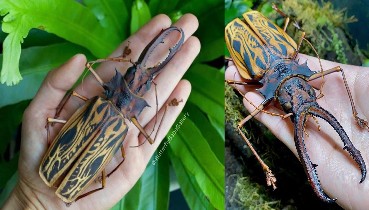 Sabertooth Longhorn Beetle...8850 views
Sabertooth Longhorn Beetle...8850 views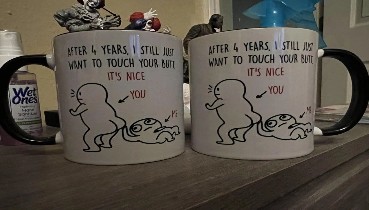 26 Unique, Weird, And Cool Coffee Mugs That You'd Crave To Have1468 views
26 Unique, Weird, And Cool Coffee Mugs That You'd Crave To Have1468 views-
Advertisements
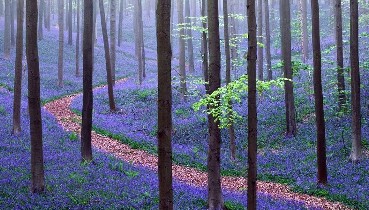 Beautiful Photos of Belgium’s Blue Forest10886 views
Beautiful Photos of Belgium’s Blue Forest10886 views The Walking Trees of Ecuador: They Reportedly Move Up to 20 Meters Per Year84 views
The Walking Trees of Ecuador: They Reportedly Move Up to 20 Meters Per Year84 views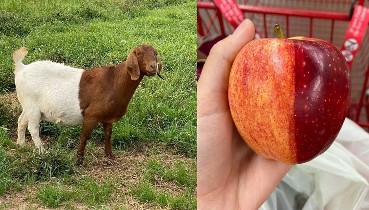 20 Times Nature’s Printer Lost Its Settings, and the Results Are Adorable123 views
20 Times Nature’s Printer Lost Its Settings, and the Results Are Adorable123 views There Is A Flower That Has Petals That Look Like Little Hummingbirds91 views
There Is A Flower That Has Petals That Look Like Little Hummingbirds91 views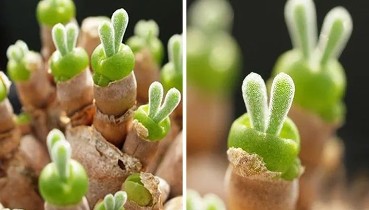 Super Cute Bunny Succulents473 views
Super Cute Bunny Succulents473 views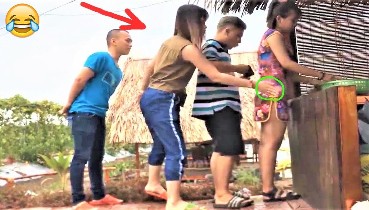 Best Funny Video Complications101 views
Best Funny Video Complications101 views





